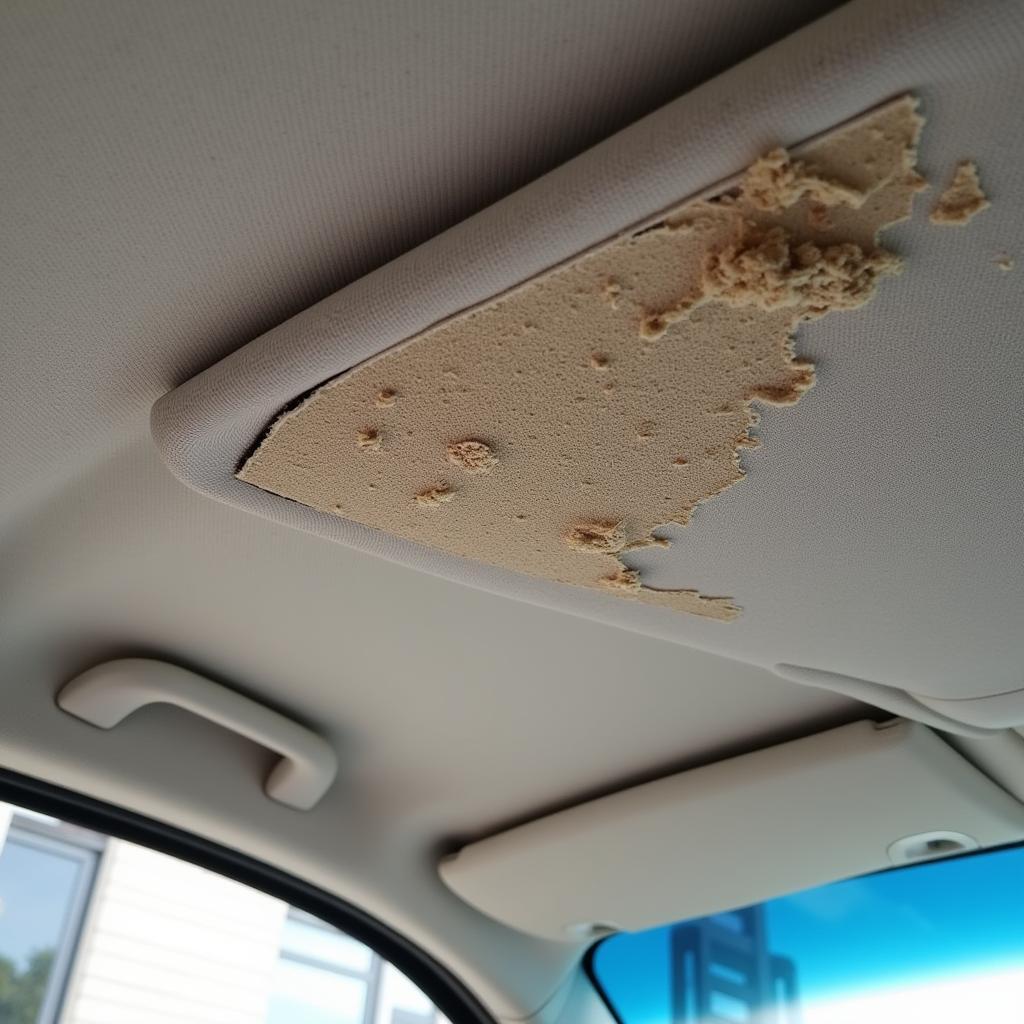Fixing a car tire puncture can be a daunting task, but with the right knowledge and tools, it can be done efficiently and safely. This guide will walk you through various methods, from temporary fixes like using a tire sealant to more permanent solutions like patching or replacing the tire.
Identifying a Puncture and Assessing the Damage
Before fixing a car tire puncture, you need to confirm that a puncture is indeed the problem. Signs of a puncture include a slow leak, a flat tire, or a noticeable object embedded in the tire. Once you’ve confirmed the puncture, assess the damage. A small puncture might be repairable, while a large tear or damage to the sidewall likely requires tire replacement.
What should you do first when you suspect a puncture? Pull over to a safe location away from traffic and inspect your tires. A tire pressure gauge can help confirm the air loss.
Temporary Fixes for Car Tire Punctures
Sometimes, a quick fix is necessary to get you back on the road. Tire sealant can be a lifesaver in these situations. This sealant is injected into the tire through the valve stem and fills the puncture, temporarily sealing the leak. Remember, this is a temporary solution, and you should still have the tire professionally repaired or replaced as soon as possible. You can also use a spare tire.
What’s the benefit of using tire sealant? It offers a quick and easy way to get back on the road without the need for tools or jacking up the car. Learn how to fix a door handle on a car to ensure you can access everything you need.
Fixing a Car Tire Puncture: Patching and Plugging
For small punctures, patching the tire from the inside is a more permanent solution. This involves removing the tire from the rim, locating the puncture, and applying a patch to the inside of the tire. Plugging, on the other hand, involves inserting a rubber plug into the puncture hole. While quicker than patching, plugging is generally considered less reliable and is not recommended for all puncture types. You might need information on how to fix a frozen car lock if the weather has contributed to your car troubles.
How long does patching a tire take? It typically takes a professional around 30-45 minutes to patch a tire.
Replacing a Damaged Tire
If the damage is extensive, like a large puncture or sidewall damage, tire replacement is the safest option. This involves removing the damaged tire and installing a new one. Make sure to choose the correct tire size and type for your vehicle. Check out how to fix oxidized paint on a car to maintain the appearance of your vehicle.
When should you replace a tire instead of patching? Replace the tire if the puncture is too large, the sidewall is damaged, or the tire tread is worn below the legal limit.
Is fixing a puncture expensive? The cost varies depending on the repair method and the tire shop, but patching is typically more affordable than replacement. Sometimes, a jammed car door lock can be related to internal mechanisms failing. Knowing how to fix car door handle inside can help in such cases.
Conclusion
Fixing a car tire puncture requires understanding the damage and choosing the right repair method. Whether using a temporary fix like tire sealant or opting for a more permanent solution like patching or replacement, prioritizing safety is paramount. If you’re unsure about the best course of action, consulting a qualified tire professional is always recommended. Contact AutoTipPro at +1 (641) 206-8880 or visit our office at 500 N St Mary’s St, San Antonio, TX 78205, United States, for expert assistance.
FAQ
- Can I drive on a tire sealant-filled tire indefinitely? No, tire sealant is a temporary fix. You should get the tire repaired or replaced as soon as possible.
- What tools do I need to change a tire? You’ll need a jack, a lug wrench, and a spare tire.
- How do I know if my sidewall is damaged? Look for cuts, bulges, or cracks in the sidewall.
- Can I patch a tire myself? Yes, but it’s recommended to have it done by a professional.
- How often should I check my tire pressure? Check your tire pressure at least once a month and before long trips.
- What can I do to prevent punctures? Avoid driving over potholes and debris, and maintain proper tire pressure.
- How do I dispose of a damaged tire? Most tire shops will recycle old tires.






Leave a Reply